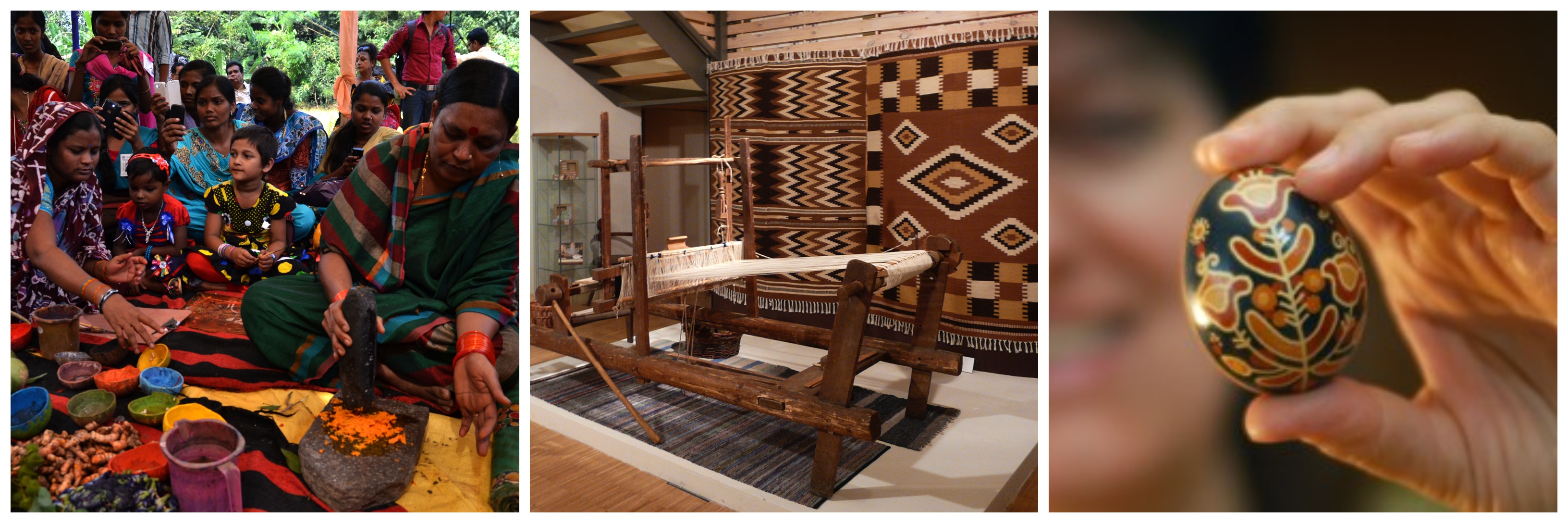Dyes from natural materials were pushed out by the spread of synthetic dyes in the 19th century, but luckily, there were old people still living Székely Land in the 1970s and 80s, who knew what plants could be used to produce dyes, and how. Research indicates that more than sixty types of dye plants are known in Csík County alone.

The patachitra in India is not just a form of visual folk tradition. The word, composed of the Sanskrit words "pata", clothing and "chitra", indicating dyeing, refers to a unique Bengali folk tradition. The stories, painted on often 2-3 meter long scrolls using plant dyes, had songs associated with them, which would be performed going from one village to the next. The scrolls have preserved historical events, mythological stories, creation myths and traditions for the ages. The songs associated with them were preserved through oral tradition. In India, crimson was made using saffron and beetroot, green from string bean leaves, yellow from turmeric, while red was obtained using young teak leaves and brown using old leaves.
Today, we once again turn with great enthusiasm towards the techniques and procedures, that were self-evident to our forebearers. Ones that do not involve plastic, are not unhealthy to make or use, but are natural and sustainable.
Within our exhibition, we demonstrate this ancient procedure, its revival and its uses today, through an Indian and two Hungarian traditional folklore handicraft cultures.
Further information:
+36 30 160 5361
Opening hours:
Monday - Friday: 10 AM - 6 PM
The entrance is free of charge!
Hungarian Heritage House
1011 Budapest, Corvin tér 8.
